Edition 12 – October 2019
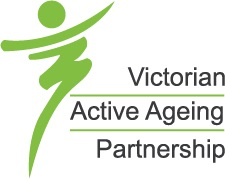
VAAP UPDATE
Victorian Active Ageing Partnership (VAAP) finishing up | VAAP Research and Practice Forum brings a strong focus to the importance of communication | VAAP initiative examining the attributes of successful partnerships | Review of the VAAP Self-assessment Tool and Resources (SaTR) | Questions to assist in tailoring and delivering physical activity programs
STAKEHOLDER SPOTLIGHT
Gymnastics program proves age is no barrier to fitness | Exercise & Sports Science Australia project features exercise classes via telehealth | Make your move for better ageing – Supporting multicultural seniors to engage in physical activities | Social prescribing in Brimbank
RESEARCH UPDATE
Life Activity Clubs support the maintenance of physical activity | Tai chi improves cognitive function in those with early stage dementia | Resistance exercise can play a vital role in tackling age-related chronic disease
STAY IN THE KNOW
Victorian Seniors Festival 2019 | New name and new look for ‘Living Longer, Living Stronger’ (LLLS) | Did you know dogs keep you fit? | Frailty and healthy ageing | Challenging ageism | Doing sport differently | Information and advice on musculoskeletal conditions
UPCOMING EVENTS
Seniors Exercise Park – Safe use, exercise prescription and program design
VAAP Update
Victorian Active Ageing Partnership (VAAP) finishing up
The VAAP was originally funded for three years from October 2015 and Musculoskeletal Australia (MSK) and the VAAP Coordination Team were most pleased when the Victorian Department of Health and Human Services (DHHS) decided to fund a fourth year. This decision was based, not on a request from MSK, but as a result of the high quality work that had been produced in the first three years and the excellent stakeholder engagement that had been achieved during that time.
MSK has led the VAAP Coordination Team and worked in collaboration with Monash University, Fitness Australia and (in the fourth year of the project) Vicsport. We are very proud to have used an evidence-based approach, in conjunction with service providers and older people, to develop strategies and tools, and undertake various initiatives to build the capacity and inclusiveness of the sector, encourage sustainable change, and increase the availability, accessibility, appropriateness and quality of physical activity (PA) opportunities for older people. These tools, strategies and initiatives have included:
- A statewide physical activity data audit and gap analysis undertaken at the beginning of the VAAP across 79 LGAs as a baseline to guide project activities;
- A literature synthesis re: workforce and organisational factors influencing the engagement of older people in PA, which then informed the development of the VAAP Evidence-based Best Practice Framework for the Engagement of Older People in Physical Activity;
- Development of five sector-appropriate versions of the VAAP evidence-based Self-assessment Tool and Resources (based on the VAAP Evidence-based Best Practice Framework);
- Identification of strategies to better engage ‘hard to reach’ older people and the development of related online PD resources (which were accredited by relevant professional bodies);
- A series of case studies undertaken to identify the key elements to maximise the sustainability of exercise when older people transition from a semi-structured setting into community-based PA programs;
- Mapping of the sports industry to determine their needs re: the improved engagement of older people in sports;
- Qualitative study and development of online resources to promote the development and maintenance of networks of, and partnerships between, service providers of PA opportunities for older people;
- Development of resources for service providers about pre-exercise assessment tools which promote tailoring and appropriate exercise;
- Identification of models and strategies for engaging carers in PA as listed in the ‘Victorian Carer Strategy 2018-2022’ (Priority 1 – Carer health and wellbeing);
- Convening of the VAAP Research and Practice Forum each year of the project with an annual attendance of over 200+ people and a purpose of promoting evidence-based practice, improving service providers’ skills and knowledge when working with older people in a PA setting and networking;
- Six regional seminars presented to 316 service providers and four regional U3A workshops delivered statewide during to approximately 100 U3A members;
- Three VAAP e-newsletters distributed each year to a mailing list of over 2,000 service providers and organisations with the purpose of sharing good practice case studies, the latest research and relevant news and events;
- Three Project Advisory Group meetings each year involving representatives from statewide peak agencies (VicHealth, Vicsport, MAV, YMCA Victoria, RecLink Victoria, U3A Network Victoria, Neighbourhood Houses Victoria, COTA Victoria, Parks Victoria, etc) and other representative agencies (City of Port Phillip, Sunbury Community Health, Western Victoria Primary Health Network, Victoria University – Institute for Health and Sport);
- Numerous oral presentations at local forums and conferences, as well as several VAAP-related oral presentations delivered at international conferences;
- Three VAAP-related articles published in peer-reviewed journals.
The VAAP webpage will be continued and maintained while we feel that the information it contains remains relevant and useful (and within Musculoskeletal Australia’s resources). A review of the VAAP Self-assessment Tool may also take place before the end of this year (further information is available in an eNews item below).
The VAAP Coordination Team wishes to acknowledge the fantastic contribution of the members of the VAAP Project Advisory Group and the Central Office DHHS staff, with whom we have worked closely and positively over the last few years.
Last, but not least, the VAAP Coordination Team wishes to thank and acknowledge all the fabulous and dedicated service providers and older people whom we have met, liaised and worked with over the course of the project … it has been a pleasure and a delight to meet and work with you!
If you have any queries or questions in relation to this matter, please email genevieve@msk.org.au
VAAP Research and Practice Forum brings a strong focus to the importance of communication
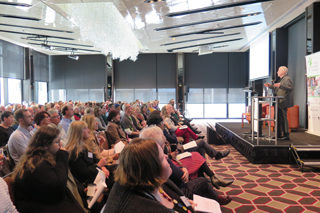
The fourth VAAP Research and Practice Forum – Communication, older people and physical activity: Giving and receiving the message – was held on Thursday 29 August 2019.
The Forum was opened by the Commissioner for Senior Victorians and Ambassador for Elder Abuse Prevention, Gerard Mansour, and was attended by over 200 people from over 100 Victorian and interstate organisations.
Recordings of the principal presentations and the Powerpoint presentations from the other sessions at the Forum, which detail various perspectives on the topic of communication and relevant initiatives are available here.
Review of the VAAP Self-assessment Tool and Resources (SaTR)
As you are aware, the VAAP SaTR is based on the VAAP evidence-based best practice framework for the engagement of older people in physical activity. Five sector-appropriate versions of the VAAP evidence-based Self-assessment Tool and Resources were developed and have been in use by numerous agencies over the last 12–18 months.
Despite the ending of the VAAP, discussions are underway with DHHS regarding a separate piece of work involving a possible review of the VAAP SaTR before the end of the year. This piece of work will ensure that the life of the VAAP SaTR is extended and that the SaTR remains relevant, useful and in line with evidence-based best practice.
If you and/or your organisation has been using the SaTR and have any feedback about it, we would love to hear from you. The aspects about which we are interested in finding out are:
- Any sections of the SaTR that could be improved;
- Any additional ‘helpful tips and resources’ which could be included;
- The parts of the tool and you have found helpful;
- Any technical issues which need to be addressed;
- Your overall feedback about the SaTR;
- Other general comments.
If you have any comments and feedback about the SaTR, we would love to hear from you! Please email genevieve@msk.org.au or phone on (03) 8531 8018.
Questions to assist in tailoring and delivering physical activity programs
A set of pre-exercise assessment questions that could be used to determine the needs, abilities and goals of older people prior to their engagement in physical activity programs, will assist in tailoring and delivering programs that are comfortable, rewarding and beneficial. These questions can also be used in conjunction with other pre-exercise screening tools that service providers are currently using.
An initial search for pre-exercise assessments was undertaken and lead to the identification of 34 tools. Predominantly, these tools had a risk management focus and are used to record health conditions that may lead to adverse events during exercise. Other topics that are addressed in the tools include: aspect of physical performance (e.g., balance, strength, mobility); ability to undertake activities of daily living; health behaviours (e.g., physical activity, smoking); physical activity goals; and physical activity history. In addition, it is common for pre-exercise assessments to record personal details including age, medical practitioner and living arrangements.
Based on this review, the initial list of topics for inclusion in the VAAP pre-exercise assessment questions were:
- physical activity goals;
- program preferences (e.g. exercises, format);
- access and attendance requirements (e.g. transport, timing);
- health conditions that may affect participation;
- psychosocial factors that may affect participation (e.g. confidence, beliefs).
A short-term working group, including service providers from diverse settings, has been convened to review and have input into the pre-exercise assessment topics and questions.
The working group has met on two occasions to discuss the components and questions within, what is now called, the ‘Seniors Physical Activity Program Engagement and Planning (PEP) Guide’.
The draft PEP Guide is undergoing a final review by the working group members and will also be made available to the VAAP Project Advisory Group members for comment. It will then be made available more broadly on the VAAP webpage.
Stakeholder Spotlight
Gymnastics program proves age is no barrier to fitness
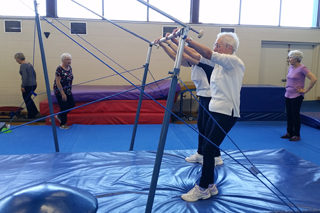
Vicsport’s Participation Strategy Manager, Tom Dixon, was recently invited to observe a ‘Fitter for Life’ gymnastics program at the Mordialloc Community Centre. The event was held as part of Women’s Health Week – a week dedicated to women making health a top priority.
As a member of the Victorian Active Ageing Partnership Coordination Team, Tom was excited to witness the program first hand. Around 25 women participated in the program and the age of participants ranged from late 50s to mid-80s.
The program involves people completing a diverse range of gymnastics movements across two circuits, followed by a fun game to finish. Movements include skipping, box step-ups, planking and much more. It was clear that participants not only enjoyed the program, but gained strength and coordination, both key benefits for older adults doing sport and recreation programs.
Fitter for Life gymnastics is run across Australia and has the benefits of building skills for common life activities like walking up and down stairs, playing with grandchildren and even hanging out the washing. The program can be adapted by local centres to ensure it meets the needs of participants.
The Mordialloc Community Centre provides a diverse range of activities including gymnastics, dance, netball, basketball and karate. Running Fitter for Life provides an opportunity for older adults in the local community to build strength within the fun, safe confines of the centre.
‘Fitter for Life gymnastics is a great example of a program with all the right elements in place – appropriate activities, empathetic coaches and the chance for participants to continue to develop new skills in a fun, engaging environment,’ said Tom.
April Wilson, Inclusion & Programs Manager at Gymnastics Victoria, said, ‘We believe gymnastics is for everybody regardless of their age, ability, background or personal attributes. Fitter for Life is one of many programs we offer to create opportunities for people of all ages and ability to gain the benefits gymnastics provides to everyday life.’
For information about Fitter for Life, head to https://www.fitterforlife.org.au/.
This article was submitted to the VAAP newsletter by Tom Dixon, Participation Strategy Manager, Vicsport and member of the VAAP Coordination Team.
Exercise & Sports Science Australia project features exercise classes via telehealth
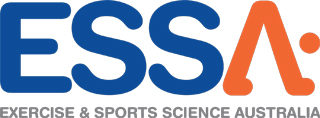
Older Australians in rural and remote area and women over the age of 75 are priorities of a new national project, ‘Exercise Right for Active Ageing’ designed to help older people become more active through evidence-based, age-appropriate exercise.
Exercise Sports Science Australia (ESSA), the professional association for university qualified and Accredited Exercise Physiologists (AEP) and Accredited Exercise Scientists (AES) secured a Sport Australia ‘Move It AUS – Better Ageing’ grant for the project until November 2020.
Participants are screened via the industry standard screening tool and undertake a subsidised pre-exercise assessment prior to starting classes.
Subsidised group sessions are held in facilities ranging from exercise physiology/exercise science clinics to council owned leisure facilities to retirement villages and include falls prevention, strength and balance, hydrotherapy and Pilates classes.
A key outcome is to develop individualised exercise and volunteering pathways for participants and assist them navigate the health system to support further access to exercise and link to local volunteering opportunities. Importantly, rural and remote Australians who can’t access classes in person will have access to classes via telehealth providers who meet best practice standards.
ESSA has developed the project to build on its ‘Exercise Right’ initiative, an evidenced-based information website inspiring people to live happier and healthier lives through motivational stories, engaging content and evidence-based tips especially for people with chronic conditions.
ESSA members are keen to engage with community organisations to establish cross referrals and identify volunteering opportunities for participants. If you are keen to find out more, contact the Project Team on 07 3171 9682 or eraa@essa.org.au or take a look at our website where you can locate a local provider.
This article was submitted to the VAAP newsletter by Guy Byrnes, Project Coordinator – Exercise Right for Better Ageing, Exercise & Sports Science Australia.
Make your move for better ageing – Supporting multicultural seniors to engage in physical activities
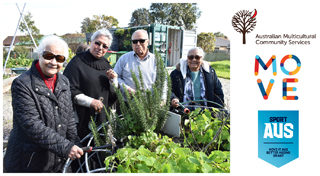
You are never too old to play and enjoy your life. In Australia, the number of people over 65 is growing quickly with many seniors leading full and productive lives well into their 80s and 90s. The earlier you commit to a healthy lifestyle, the better your chances of ageing well, and the more physically active and connected with others you are, the better you can feel regardless of age. Current Australian Physical Activity Guidelines encourage older people to undertake 30 minutes of medium intensity exercise each day.
Research highlights that older people from multicultural backgrounds are faced with significant challenges to their health and wellbeing, including low access to services, language barriers, and lack of culturally appropriate services. Consequently, multicultural seniors are at an increased risk of chronic diseases and poor mental health.
Australian Multicultural Community Services Inc. (AMCS) is very proud to be the recipient of $1.8M in funding provided through the Sport Australia ‘Move It AUS – Better Ageing’ grant program. Under this program, AMCS has developed the ‘Moving for Life – The Way I Like It’ program to increase the level of physical activity of older Australians over 65 years from multicultural backgrounds, and improve their overall health and wellbeing. Activities in the program include social dancing, tai chi, walking basketball and community gardening, etc.
AMCS has found that facilitating a place to exercise and congregate with people of the same cultural background, same language or similar age will motivate seniors’ participation in exercise, and we support a range of ethnic community groups and clubs to engage their seniors in regular physical activities. Older people from a multicultural background can face various religious or cultural expectations in relation to their social and physical behaviours, which may limit their exercise participation. For instance, we have identified that we may need to provide women-only facilities and times for older females to address cultural barriers to participation, which are a particular concern of some older women, with many older women expressing a preference for gender-segregated activities and feelings of embarrassment or concerns about mixed-gender programs.
To get older inactive Australians active, we will work through local community centres and neighbourhood houses to promote and provide a range of activities to target seniors groups, who may already have some contact with the centres, e.g.: Hill Side Neighbourhood House, Springvale Neighbourhood Centre, City of Monash community centres. Engaging with local communities and connecting with their existing events have made it easier for AMCS to reach certain older people. Participants are more comfortable with their own ethnic group. Programs are being conducted in culturally-specific languages along with provision of translated information.
The program also offers free ‘No Falls’ training for community leaders, aged care staff, volunteers and carers, supporting seniors to be more able and more stable. These training programs will train coaches and leaders or train seniors themselves to ensure continuation of the activities beyond the project funding.
AMCS has partnered with a rage of government and not-for-profit organisations to deliver this project. For instance, AMCS partnered with the Western Bulldogs who are delivering 10-week physical, mental and educational courses called Sons of the West and Daughters of the West. YMCA Victoria has come on board with groups of seniors able to visit one of the many outdoor adventure camps dotted around the State to participate in day-long experiences.
The project feedback has been overwhelmingly positive. Not only seniors are getting out of their house, they are having fun and they are doing something beneficial for themselves. It’s the joy of seeing them interact with other members of their community who they didn’t even know.
AMCS would like to support community centres, neighbourhood houses, ethnic senior groups and clubs, who have no or a lack of funding to engage senior members in regular physical activities.
For more information, call on (03) 8371 2344 or email betterageing@amcservices.org.au
This article was submitted to the VAAP newsletter by Dr Medha Gunawardana, Project Manager, ‘Moving for Life – The Way I Like It’ program, Australian Multicultural Community Services Inc.
Social prescribing in Brimbank
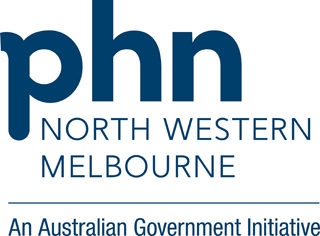
Many patients are presenting to GPs with a range of issues that are non-medical, but which impact their health and wellbeing. Social prescribing is an integrated care approach that is designed to complement traditional health care by providing social prescriptions to help people address these issues and build their capacity to self-manage.
A test model of social prescribing is currently being trialled by IPC Health, in partnership with the North West Melbourne Primary Health Network (NWMPHN) and the Brimbank Collaboration (Brimbank City Council and Australian Health Policy Collaboration, Victoria University).
The Social Prescribing Program is run at the IPC Health Deer Park location and gives GPs and other health professionals the opportunity to refer patients, who may need social or community services, support to address non-clinical issues to the on-site Wellbeing Coordinator.
The Wellbeing Coordinator works with the client to understand their needs and goals, to develop a plan around these goals, and facilitate access to local sources of support. These support services may include things like group exercise classes, local community groups, legal or financial services, or parenting support. This flexibility allows the client to engage with local services and supports that are specific to their needs. The Coordinator then maintains contact between the client and the GP to ensure consistent care.
To date clients have been linked to a wide variety of services and activities, including:
- ballroom dancing
- swimming
- tai chi
- arts and craft groups
- home library services
- language groups
- financial services assistance.
The program is now widely available to community members, who can be referred to the program by their GP or allied health professional. Individuals can also self-refer to the program by contacting IPC Health Deer Park.
More information about the Social Prescribing Program can be found here: https://www.ipchealth.com.au/social-prescribing/
This article was submitted to the VAAP newsletter by Ms Natalie Seed, Program Officer, Integration, North Western Melbourne Primary Health Network.
Research Update
Life Activity Clubs support the maintenance of physical activity
The audit of physical activity programs for older people in Victoria, undertaken by VAAP in 2015, revealed the broad range of opportunities that are available, and the considerable variation that exists in their frequency, intensity and cost. Programs that are easily accessible and allow ongoing participation by older people have a particularly important role to play in enabling the attainment of the multiple benefits that physical activity can provide. This study explored the effects of Life Activity Clubs (LACs) in Victoria, which are volunteer-lead groups that offer a range of activities for a small annual fee, upon the physical activity and quality of life of participants.
The study used a mixed-methods design, comprising before and after surveys of 35 older people enrolling in LACs, and two focus groups with 11 participants to explore the factors that affected their engagement in the groups and the impacts that these brought about. Participants had a mean age of 67 years and most (80%) were women. The study enabled comparison of the experiences of older people who took part in LACs that were predominantly offering social activities (e.g., book groups, dine outs), with those which were offering physical activity (e.g., walking, table-tennis). Follow-up surveys were conducted 6 and 12 months after enrolment.
Participants in the LAC groups had high levels of physical activity at baseline, with the majority (80%) undertaking the recommended amount of activity for adults at enrolment. Both physical activity and quality of life were maintained over 12 months in the LAC physical activity groups, whereas there was a decline (albeit non-significant) in these outcomes in the socially-focused LAC groups. The focus groups revealed that the LAC groups offering physical activity facilitated maintenance of participation through the enjoyment of being active with others, the social norm of physical activity created in the group environment, the regular scheduled commitment of the group, and the leadership opportunities offered by the LAC model.
The complete article can be viewed at: Lindsay-Smith G, Eime R, O’Sullivan G, Harvey J, van Uffelen JG. ‘A mixed-methods case study exploring the impact of participation in community activity groups for older adults on physical activity, health and wellbeing.’ BMC Geriatrics. 2019;19(1):1-5. Available at: https://bmcgeriatr.biomedcentral.com/articles/10.1186/s12877-019-1245-5
Tai chi improves cognitive function in those with early stage dementia
Dementia it is the single greatest cause of disability in older Australians and, given the dramatic increase taking place in its prevalence globally, is referred to as the chronic disease of the 21st century. Because physical activity is widely accepted as a behavioural intervention that can preserve cognitive function among older people, there is interest in identifying the types and delivery methods of organised physical activity that can confer these benefits. Tai Chi is a physical activity that involves choreographed movement patterns, which require visuospatial skills, information processing, and episodic memory.
This article reports the findings of a systemic review of studies which have investigated the impact of Tai Chi upon cognitive function in older adults with early stage dementia.
The review included nine studies involving older adults in the early stages of dementia, six of which were randomized controlled trials, with samples sizes that ranged from 11 to 238. Three of the studies were conducted in the United States, three in China, with one each in Brazil, France and Thailand, respectively. The mean age of participants across all studies was 78 years. In seven instances they were living in the community, and in the remaining two in an institutional environment. The Tai Chi interventions varied in style, duration (8 weeks to 1 year), and frequency of practice (1 to 4 times a week).
The studies examined showed positive impacts of Tai Chai participation on multiple measures of cognitive ability, including global cognitive function, visuospatial skills, semantic memory, verbal learning and memory, and self-perception of memory. The authors concluded that the cognitive benefits of Tai Chi for older adults with early stage dementia were comparable to other forms of exercise, and that benefits can be attained from programs of at least three months in duration, comprising three or more sessions of 30-60 minutes per week.
The full report of this study is provided at: Lim KH, Pysklywec A, Plante M, Demers L. ‘The effectiveness of Tai Chi for short-term cognitive function improvement in the early stages of dementia in the elderly: a systematic literature review.’ Clinical Interventions in Aging. 2019;14:827. Available at: https://www.dovepress.com/the-effectiveness-of-tai-chi-for-short-term-cognitive-function-improve-peer-reviewed-article-CIA
Resistance exercise can play a vital role in tackling age-related chronic disease
The progressive loss of muscle mass and strength that is associated with ageing, referred to as sarcopenia, contributes to mobility disability, functional decline and the risk of falls. Because of this, older adults are encouraged to engage in regular resistance training (RET). There is a misconception, however, that RET results in a distinctly different set of benefits to aerobic training (AET), which may mean that recommendations concerning RET are downplayed or overlooked. This article summarises the evidence about the broad range of health impacts that can be achieved by RET and considers the implications for physical activity guidelines and communication.
The article presents the findings of a narrative review, in which clinical, epidemiological and intervention evidence concerning the impacts of RET is examined. Where possible, the authors report the relative benefits of RET and AET. The primary outcomes examined are physical mobility disability, type 2 diabetes, cardiovascular disease (CVD), and cancer.
As expected, the review finds strong evidence about the role that RET plays in maintaining physical mobility. Importantly it also reveals an accumulation of evidence that RET has significant preventive benefits for type 2 diabetes, CVD and cancer, which are outcomes traditionally associated with AET. The plausible biological mechanisms through which RET achieves these impacts are described. The authors recommend RET by older people on at least two occasions per week, that is progressive, involves the whole body, and is conducted to the point of volitional fatigue. Recognising that many older people are not comfortable in the gym environment, they propose that methods for using body weight for resistance are promoted. It is recommended that RET be given more prominence in physical activity guidelines for older people.
The full article can be found at: McLeod JC, Stokes T, Phillips SM. ‘Resistance exercise training as a primary countermeasure to age-related chronic disease.’ Frontiers in Physiology. 2019;10:645. Available at: https://www.frontiersin.org/articles/10.3389/fphys.2019.00645/full?utm_source=F-NTF&utm_medium=EMLX&utm_campaign=PRD_FEOPS_20170000_ARTICLE
Stay in the Know
Victorian Seniors Festival 2019
More than 2,500 free or low-cost events will be taking place across Victoria during October. READ MORE
New name and new look for ‘Living Longer, Living Stronger’ (LLLS)
The LLLS program is undergoing an upgrade in several ways. READ MORE
Did you know dogs keep you fit?
Dog owners are more likely to meet physical activity guidelines than people without a dog. READ MORE
Frailty and healthy ageing
The Centre of Research Excellence in Frailty and Healthy Ageing has produced a video in response to information needs and misconceptions about frailty. READ MORE
Challenging ageism
A paper by COTA Victoria and Senior Rights Victoria provides an overview of ageism in Australia and advice on how to stop it. READ MORE
Doing sport differently
VicHealth has identified six key principles for designing and delivering sport-based programs for less active people. READ MORE
Information and advice on musculoskeletal conditions
The Musculoskeletal Australia Help Line is staffed by clinically trained nurses and experienced volunteers and can provide information and advice to staff and older people. READ MORE
Upcoming Events
Seniors Exercise Park – Safe use, exercise prescription and program design
When: Monday 14th October 2019, 10.30am-2.00pm
Where: Thomastown
Cost and bookings: No cost, but only a waiting list available now. REGISTER HERE














